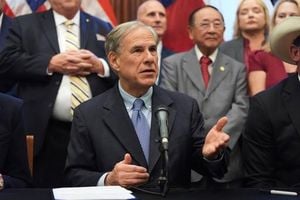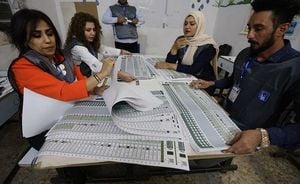Across Pakistan-occupied Kashmir (PoK) and Balochistan, the first of October 2025 marked another day of turmoil, unrest, and mounting civilian distress as violent clashes, military crackdowns, and communication blackouts gripped the regions. Reports from multiple sources, including IANS, The Balochistan Post, and ANI, paint a picture of escalating confrontations between local populations or resistance groups and Pakistani authorities—each side entrenched, each day bringing new casualties and deeper uncertainty.
In PoK, the spark for the current wave of protests was lit by the Jammu & Kashmir Awami Action Committee (JKAAC), a group that has long advocated for greater rights and autonomy for the region’s people. As convoys of JKAAC members from Rawalakot and Mirpur pressed toward Muzaffarabad, the capital of PoK, authorities responded with a heavy hand. Containers were placed on Palak Bridge in Dadyal to block the movement of protestors, but these makeshift barricades were quickly swept aside by determined crowds, according to IANS. The march pressed on, signaling the protestors’ resolve and the authorities’ inability to contain the groundswell of anger.
Clashes reached a fever pitch at Lal Chowk in Muzaffarabad, where Pakistani police opened fire on demonstrators. The result was tragic: two protestors killed and several others wounded. The Awami Action Committee’s leadership swiftly condemned the violence, demanding the immediate restoration of mobile services and warning that if their demands were not met, they would resort to dismantling communication towers. The committee’s 38-point charter of demands also called for an end to the twelve reserved seats for refugees and the withdrawal of privileges enjoyed by the region’s elite—issues that have fueled discontent for years.
Elsewhere in PoK, the unrest was palpable. In Rawalakot—a city with a fraught history as a hub for anti-India activities—large public gatherings erupted, with crowds chanting slogans about Kashmir’s ownership and its natural resources. The city, once synonymous with the shadowy operations of Pakistan’s ISI, now found itself at the center of a different kind of mobilization: one aimed at challenging Islamabad’s state policies and demanding basic rights. In Bagh, the situation escalated further as locals reportedly captured a significant number of Punjab Police personnel, underscoring the breakdown in law and order.
As the protests intensified, the Pakistani government responded with measures that only deepened public outrage. Markets and business centers were shuttered, internet and phone services suspended for a second consecutive day, and key roadways blocked. These moves, protestors argued, were designed to isolate them and stifle their voices. Images and videos circulating on social media showed security forces pouring into PoK cities, sparking fears of an imminent and more severe crackdown. Despite these efforts, the protestors’ determination did not waver. "Any violent action and forceful crackdown will be answered with the same intensity and will be met with force itself," AAC leaders warned, as reported by IANS.
The grievances fueling the unrest run deep. Residents of PoK have long complained of political repression, economic exploitation, and a chronic lack of infrastructure—basic amenities like electricity, transportation, and employment opportunities remain elusive. According to coverage by IANS and ANI, the region’s youth are particularly vulnerable, often radicalized by terror organizations operating with impunity. The current demonstrations, however, are driven by a broad cross-section of society, united in their call for fundamental rights and development that, they say, have been denied since Pakistan’s occupation of the region seven decades ago.
As the crackdown continued, protestors voluntarily shut down shops and public spaces in a show of solidarity. Slogans against the Pakistani government echoed through the streets, with authorities branded as "incompetent and repressive." The situation in Muzaffarabad was especially dire, with police firing causing multiple injuries and fatalities. Some demonstrators even claimed that the rival Muslim Conference, a local political grouping, had fired on unarmed protestors, further complicating the already volatile situation.
But the unrest in PoK was not an isolated incident. Hundreds of miles to the south, the district of Zehri in Balochistan was enduring its own ordeal. For four days, the Pakistani military has waged an intense campaign to retake the area from Baloch pro-independence groups such as the Baloch Liberation Army (BLA) and the Balochistan Liberation Front (BLF), who had consolidated control over Zehri in August. According to The Balochistan Post, the offensive has featured drone strikes, relentless shelling, and the deployment of armored vehicles and heavy artillery.
The impact on civilians has been devastating. Communication blackouts and road blockades have made independent verification of events nearly impossible. Petrol supplies are nearly exhausted after three days of total lockdown, and food shortages are growing acute. In Kochav, continuous bombardment has destroyed cotton fields, causing major financial losses for local farmers. Chashma and nearby villages such as Dandar and Morenki have been battered by artillery and mortar fire, damaging residential buildings and spreading fear among the population. With humanitarian access blocked and communication lines severed, the true extent of civilian casualties and property damage remains unknown, but the signs are grim.
The operation in Zehri is emblematic of the wider unrest in Balochistan, a region marked by decades of confrontation between local resistance groups and the Pakistani state. As The Balochistan Post notes, the blackout has rendered the voices of the affected population largely unheard, leaving their fate shrouded in uncertainty. "The population is bearing the brunt of the conflict," the outlet reports, as the humanitarian crisis deepens with each passing day.
Back in PoK, the protestors have vowed to keep up the pressure until their demands are addressed, with demonstrations reaching major district headquarters despite the lockdown and severe repression. The AAC’s call for a march towards Muzaffarabad on October 1 signaled the likelihood of further escalation, and all signs point to a protracted standoff.
Amidst all this, some voices have criticized the lack of international media attention on the crises unfolding in PoK and Balochistan. According to ANI, the silence of global media outlets on human rights violations in these regions stands in stark contrast to their vocal coverage of similar issues elsewhere, raising questions about selective outrage and inconsistent standards.
As October begins, the people of PoK and Balochistan face an uncertain future—caught between the demands of protest, the weight of military might, and a world that, for now, seems to be looking the other way.




